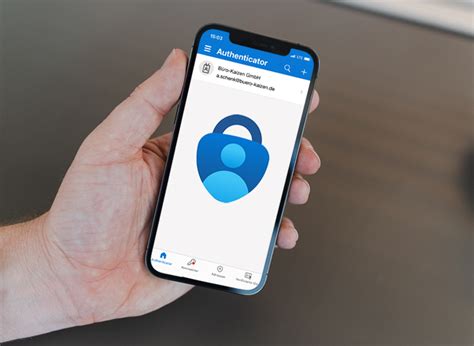Introduction
In the digital age, protecting your online accounts from unauthorized access has become paramount. Authenticator apps have emerged as a key player in this security landscape, offering an extra layer of protection beyond traditional passwords. This article delves into the depths of authenticator apps, exploring their functionality, advantages, types, and best practices.

What is an Authenticator App?
An authenticator app is a mobile or desktop application that generates time-based one-time passwords (TOTPs), which are used to authenticate users when logging into online accounts. These passwords are unique and valid for only a short duration, typically 30 seconds, making it incredibly difficult for attackers to intercept or reuse them.
Why Use an Authenticator App?
Conventional passwords can be easily compromised through phishing attacks, malware, or data breaches. Authenticator apps provide an additional layer of security, known as two-factor authentication (2FA), which requires users to provide both their password and a one-time password generated by the app. This multi-factor approach significantly reduces the risk of unauthorized access, even if a user’s password is compromised.
Types of Authenticator Apps
Authenticator apps come in various forms, each with its strengths and weaknesses:
- Freeware: These apps are available for free and typically offer basic features, such as TOTP generation and backup options. Examples include Google Authenticator and Microsoft Authenticator.
- Premium Apps: Premium authenticator apps offer advanced features, such as multi-device support, biometric authentication, and cloud-based backups. They usually come with a subscription or one-time purchase cost.
- Hardware Tokens: Hardware tokens are physical devices that generate one-time passwords. They are considered highly secure but can be expensive and less convenient than mobile apps.
Benefits of Authenticator Apps
Authenticator apps provide multiple benefits for users:
- Enhanced Security: 2FA with authenticator apps makes it significantly harder for attackers to breach an account, even if they obtain the user’s password.
- Reduced Cybersecurity Risks: Authenticator apps mitigate the risks associated with phishing attacks, password leaks, and data breaches.
- Convenience: Authenticator apps are typically easy to use and can be accessed from multiple devices, providing convenience and flexibility.
- Mobile Accessibility: Most authenticator apps are available as mobile applications, allowing users to carry their second-factor device in their pocket.
- Compliance with Regulations: Many industries and regulatory bodies require the use of 2FA for compliance purposes, making authenticator apps an essential tool.
How to Use an Authenticator App
- Enable 2FA on Accounts: Log into the online account you wish to secure and activate 2FA through app-based authenticators.
- Install an Authenticator App: Choose an authenticator app that suits your needs and install it on your mobile device.
- Scan the QR Code: Open the authenticator app and scan the QR code provided by the online account. This will link your device to the account.
- Generate and Enter OTPs: When logging in, enter your password as usual. You will be prompted to provide an OTP, which you can generate from the authenticator app.
Best Practices for Using Authenticator Apps
- Use Strong Passwords: Combine an authenticator app with a strong password to optimize security.
- Enable Multi-Device Support: Consider using an app that allows multiple devices to be linked to the same authenticator account for convenience.
- Backup Your Accounts: Save a backup of your authenticator app data, preferably in a cloud-based service.
- Monitor for Unusual Activity: Stay vigilant for any unrecognized login attempts or changes to your account settings.
Market Insights
According to the Mobile Security Index 2023, “63% of organizations surveyed use mobile authenticators as a primary 2FA mechanism.” Moreover, a study by the Ponemon Institute reported that “organizations leveraging 2FA experience a 99% reduction in successful phishing attacks.”
Future Trends
The future of authenticator apps is promising, with several trends emerging:
- Biometric Integration: Authenticator apps are expected to integrate with biometric authentication methods, such as facial recognition and fingerprint scanning, for enhanced convenience and security.
- Cloud-Based Storage: Cloud-based storage for authenticator data will become more prevalent, enabling seamless access across multiple devices.
- AI-Powered Security: Artificial intelligence (AI) will play a significant role in improving authenticator app security by detecting and mitigating threats in real-time.
Conclusion
Authenticator apps have become an essential tool in the digital security landscape, protecting online accounts from unauthorized access. By implementing 2FA using an authenticator app, users can significantly enhance their security posture and reduce cybersecurity risks. With ongoing advancements in technology, authenticator apps will continue to evolve and play a vital role in safeguarding digital identities and online transactions.



